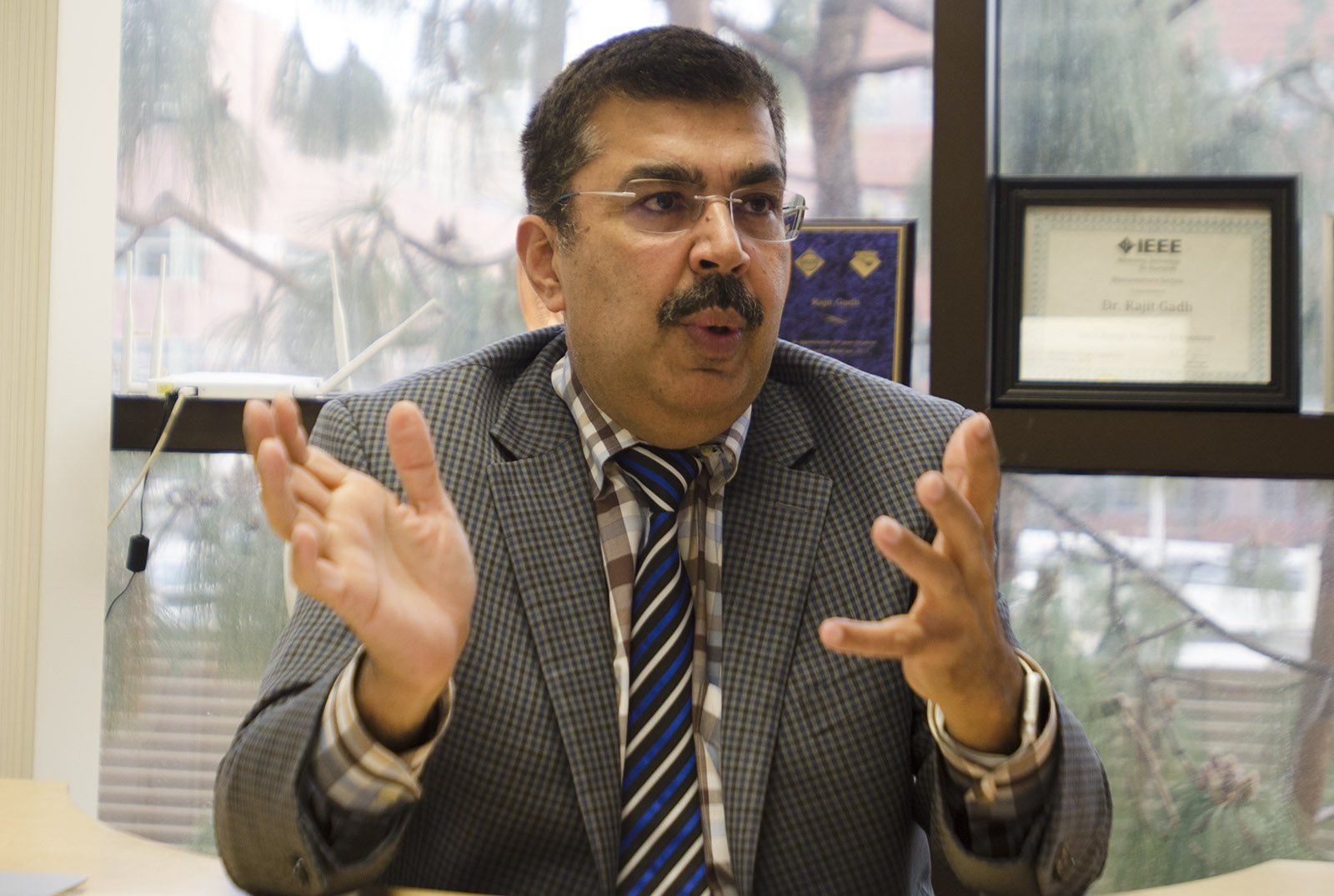UCLA professor develops smart grid technology to tackle energy shortage

Rajit Gadh, director of the UCLA Smart Grid Energy Research Center, is in charge of developing a new energy distribution network called smart grid technology. (Alejandra Reyes-Velarde/Daily Bruin senior staff)
By Xinchen Li
March 7, 2016 12:03 a.m.
Rajit Gadh is tackling energy shortage issues by redistributing energy from electric vehicles and solar panels based on consumer needs.
Gadh, the director of the UCLA Smart Grid Energy Research Center, is spearheading the development of a new energy distribution network, called smart grid technology. He intends to improve the technology in India through a new partnership between the Smart Grid Energy Research Center and an energy distribution company in New Delhi, UCLA officials announced Jan. 29.
The university and Tata Power Delhi Distribution Limited aim to use smart grid technology to increase the efficiency of energy delivery, lower its price and widen its coverage in India and other developing countries, he added.
Gadh is focused on applying smart grid technology to electric vehicles. His research team designed a new outlet for parking lots that allows up to four cars to be charged at once, compared to standard charging’s one at a time. The researchers tested the technology on an experimental Mitsubishi in Parking Structure 9.
Gadh said smart grid technology, compared to traditional power grid technology, is a less centralized and more consumer-friendly network that distributes energy according to people’s needs. He added he aims to increase charging capability by coordinating with car owners’ schedules through a mobile application.
“This technology raises the efficiency of energy use and reduces the power price,” Gadh said. “This is a win-win situation.”
Gadh said he thinks electric vehicles are eco-friendly and powerful, but the standard method of charging them is inefficient. He added electricity will cost much more than usual at peak charging times because of the high demand, and standard charging also uses high voltages that accelerate battery degradation.
The new grid coordinates with the Automated Demand Response System, a network which records demographic distribution and consumption behaviors, Gadh said. The system then redistributes energy used to charge cars according to people’s schedules, he added.
Peter Chu, project leader at the UCLA Smart Grid Energy Research Center, said he thinks the smart grid network can also teach consumers to cooperate with each other to maximize their common benefit.
“If a car owner wants to have his car charged earlier than usual, he can click the option on the app connected to the network, and other owners will try to reschedule their charging,” Chu said.
The research team is also developing a vehicle-to-grid system that transmits energy back from vehicles to the grid when there is a surplus among the vehicles and a shortage in the grid.
Several researchers in the UCLA Smart Grid Energy Research Center said they think Gadh has a good eye, differentiating technologies that can tackle modern problems from those that won’t.
“He always sees when certain technologies will fly,” said Yubo Wang, a researcher at the center and a graduate student in mechanical engineering.
Wang added working with Gadh inspired him to pursue a teaching career in smart grid technology.
Gadh, who wanted to become an engineer since childhood, said he was motivated to study smart grid technology when he noticed his peers’ concern with renewable energy and sustainability.
“Engineering connects maths and physics to the real world, which is full of challenges,” Gadh said. “That’s what I want to do – be a problem solver.”
Gadh said smart grid technology is still in early stages, and his next step is use the UCLA campus to further enhance the technology.
Gadh’s team will develop experiments in Parking Structure 9. Researchers will install 28 electric chargers, more solar panels on the roof and software that will monitor overall energy flow in real time. He added he hopes the research center can enact a more adequate use of energy by collecting more detailed data.
“The campus itself is a living lab,” Gadh said.
He added that he hopes his team can expand its successful models on campus to local communities, the country and the rest of the world.
Gadh said he thinks smart grid energy will lead to changes in economics and policy, as it becomes more widespread. He added he thinks it’s important to have a regulatory system that ensures the technology benefits as many people as possible.
“One thing is for sure – this technology opens a whole new market for us to explore,” Gadh said.


